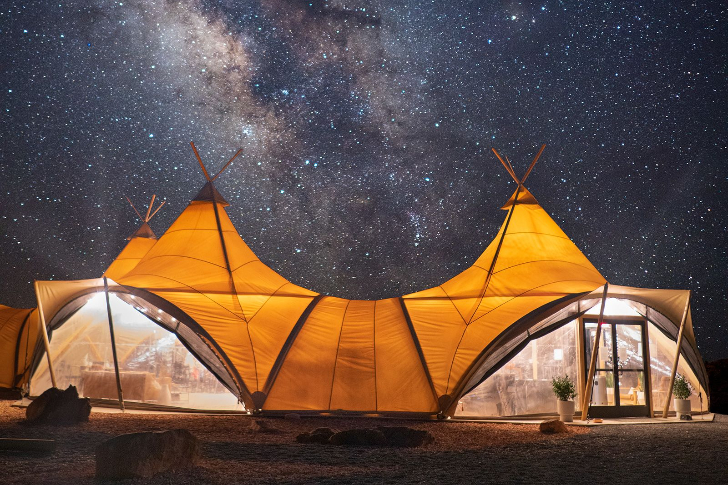Selecting a Tent for Camping Experiences
Selecting the perfect tent for your camping experiences can transform a good outing into a fantastic adventure. Understanding the different types of tents, their features, and how they match your specific camping needs is essential. This guide provides an in-depth look at how to choose the right tent based on various factors such as capacity, weather conditions, durability, and ease of setup.

Understanding Tent Capacity
One of the first considerations when choosing a tent is its capacity, or how many people it can comfortably accommodate. Tents are typically marketed as one-person, two-person, and so on, up to larger family sizes. However, these ratings can be misleading. For instance, a two-person tent usually offers a snug fit, which is optimal for weight savings when backpacking but less comfortable for car camping. A good rule of thumb is to size up by one person, especially if you need extra room for gear or prefer a more spacious sleeping area. According to a survey conducted by The Camping and Caravanning Club, about 45% of campers prefer purchasing a tent that is one size larger than their actual group size to ensure comfort.
Choosing Based on Seasonality
Tents are classified into three types based on the season they are best suited for: 3-season, 3-4 season, and 4-season tents. Three-season tents are popular due to their lightweight design and suitability for spring, summer, and fall. They typically feature ample mesh panels to enhance airflow and reduce condensation, making them inadequate for cold winter weather. Three-four season tents are designed to handle heavier winds and moderate snow loads, making them suitable for late fall and earlier spring in addition to the three seasons. Four-season tents, often referred to as mountaineering tents, are made with sturdy fabrics and less mesh to withstand harsh winter conditions. According to Outdoor Industry Association, over 70% of tents sold are 3-season, indicating their popularity and versatility for typical camping scenarios.
Material and Durability
The durability of a tent is largely dictated by its material. The most common fabrics used in tent construction are nylon and polyester. Nylon is lightweight and strong, with a natural resistance to abrasion, making it ideal for backpackers. Polyester fares better under UV exposure, resisting sun degradation better than nylon, which is an important consideration for campers in sunny locales. For durability metrics, the fabric’s denier rating, which measures the thickness of the threads, can be a useful reference. Higher denier fabrics are tougher but also heavier. For the poles, fiberglass, aluminum, and carbon fiber are typical options, with aluminum being the go-to choice for a good balance between weight and strength.
Water Resistance and Ventilation
Water resistance in tents is rated by a measure known as the Hydrostatic Head (HH), indicating the amount of water pressure a fabric can withstand before it leaks. A tent with an HH of 2000mm is generally considered adequate for moderate rain. However, for wetter climates, a higher rating is advisable. Ventilation is another critical factor, especially in humid conditions or when camping with multiple people. Look for tents with multiple ventilation points and options to adjust them to balance airflow and insulation.
Weight and Portability
The weight and portability of your tent are crucial, particularly if you plan to backpack. According to a report by the Adventure Tourism Market Study, the average weight of a backpacking tent ranges from 1 to 3 kilograms (2.2 to 6.6 pounds), depending on its capacity and material. Ultralight tents can weigh less than 1 kilogram but might compromise on durability and space. For car campers, weight is less of a concern, which allows for larger, more feature-rich tents.
Ease of Setup
Another valuable aspect to consider is how easy the tent is to set up and take down. Instant tents or pop-up tents can be set up within minutes and are a boon for those who prefer not to fiddle with complex instructions. Traditional pole tents, while sometimes requiring more time to pitch, often provide more stability and resilience against elements. User reviews and setup time stated by the manufacturer can provide insights into this aspect.
Environmental Considerations
In recent years, the environmental impact of camping gear has become a significant concern for many campers. Eco-friendly tents made from recycled materials are emerging in the market, catering to environmentally conscious consumers. These tents aim to reduce the carbon footprint while still providing the durability and weather resistance needed for outdoor activities.
Key Takeaways for Sélectionner la Bonne Tente
Selecting the right tent involves balancing various factors, including the size, weather suitability, material strength, and additional features. By understanding and prioritizing these aspects based on your specific camping style and needs, you can choose a tent that not only shelters you effectively but enhances your camping experience altogether. Remember to consider environmental impacts and opt for brands that commit to sustainability for a greener camping footprint.







Recent Comments